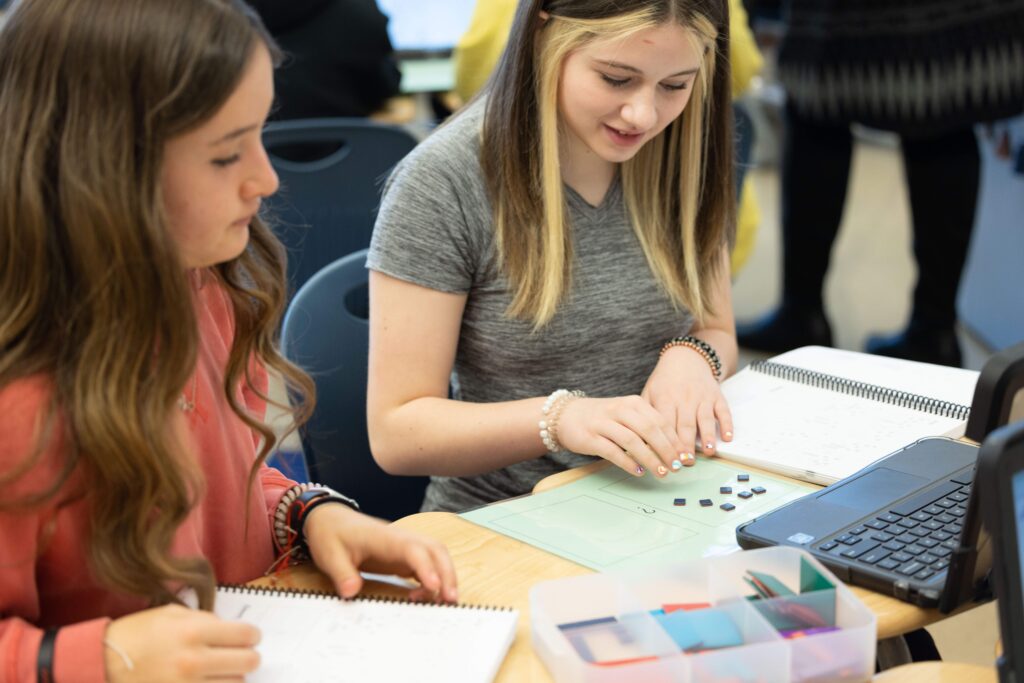May 2024

Recently, along with many other CPM team members, I have had the chance to experience Inspiring Connections from a student lens. Naturally, this has led me to reflect on what I was like back when I was in middle school. I was smart and proud of it. I was intensely shy, and even when I did put myself out there, I felt out of place. I think I would have benefited a lot from being in a CPM classroom, which emphasizes helping students learn how to share ideas with each other. I am also quite certain that I would have been mad about it, at least in the beginning. What do you mean I have to talk to people my own age? I have to explain my thoughts in a way that’s intelligible to others? The indignity of it all! I know what I mean, why is that not enough?
I don’t think I need to explain to teachers the value of communication skills. Teachers are intimately familiar with the fact that “knowing something” and “knowing how to explain it” are separate things; both are fundamental to the job. Teachers spend their entire careers refining their communication skills, connecting with a new group of students every year, identifying and bridging gaps in students’ understanding, and updating their pedagogy to reflect the latest research and their own experiences.
Despite this, classes rarely allotted time for teaching communications skills when I was a student. In fact, it was almost as though nobody wanted to admit that communication is a skillset, something you have to learn rather than being born with an innate understanding of all its nuances. Many a time, I was put in a group with my classmates and expected to already know how to have a productive discussion. Dear readers, I did not. When am I supposed to speak? What is “my place” to say? How do I disagree with someone without being rude? I eventually realized that many of my peers were just as lost as I was. This was comforting, but not helpful.
My experiences in a CPM classroom now have been different. Conversations are focused. Discussions are meaningful. It feels like we have freedom to explore, but that we aren’t completely “on our own.” Now, my fellow students have all been adults, I will acknowledge that confounding variable. (Though, age alone has not been enough to save me from awkward silences in other situations.) That aside, I think I see how the class was designed to set us up for success. These are my notices and wonderings of what we have done and why it may have been helpful.
- Team roles give structure to group dynamics. Questions about who is responsible for what are answered before the conversation even begins. Who keeps track of materials? The Organizer. Who should be making sure that everyone is involved in the discussion? The Coordinator. Perhaps this clear, impartial assignment of responsibilities alleviates worries about fairness or seeming “bossy” when trying to stay on task.
- Activities are often structured to avoid imbalances. Rather than one student not contributing or doing the majority of the work, all students must work together. For example, when teams work at a VNPS, the team member with the marker writes their teammates’ ideas, not their own, and the marker is passed around every few minutes.
- Sentence frames model ways to share ideas. They provide clear, concise, appropriate phrasing so that team members can communicate effectively.
- Expectations for conduct are explicitly communicated. These expectations guide group activities in the classroom, where an adult can mediate or facilitate forward momentum when necessary.
- Visibly random teams create opportunities. Working with new teammates every day lets students connect with different classmates and hear different perspectives.
- Individual thinking time reduces pressure. This time is valuable for students who need a moment to collect their thoughts or who like to rehearse what they want to say.
I think one of the reasons I liked math class as a child was that it so rarely took me out of my comfort zone. I liked that all the work was solitary, that I was expected to quietly take notes and only volunteer to speak to the class if I “knew the answer.” I most likely would not have been thrilled to find myself in a classroom designed to take me out of that comfort zone. However, I’m positive that I would have come around to it. CPM curricula don’t just push students out of their comfort zones; they provide tools and supports that actually help them build the skills they need to overcome challenges. In some ways, the course felt tailor-made for my childhood self’s developmental needs. It makes me happy to think about how today’s students must have grown during this school year, mathematically and beyond.
[Editor’s Note: Morgan is a copy editor in the Curriculum & Assessment department of CPM. She supports the writing teams responsible for both Inspiring Connections and Core Connections.]

Morgan Normand
morgannormand@cpm.org

